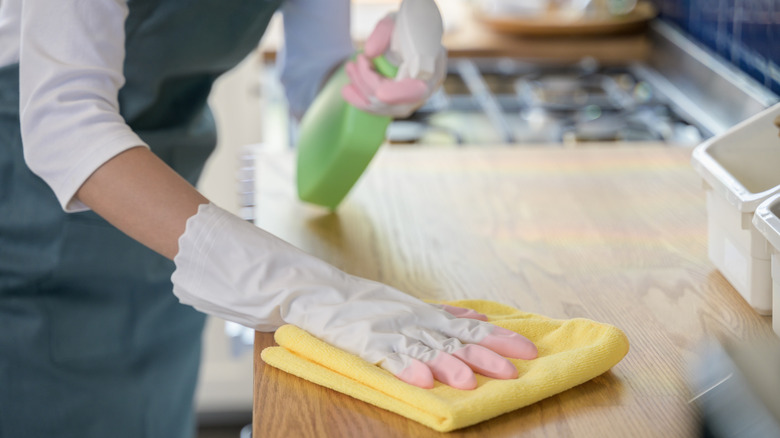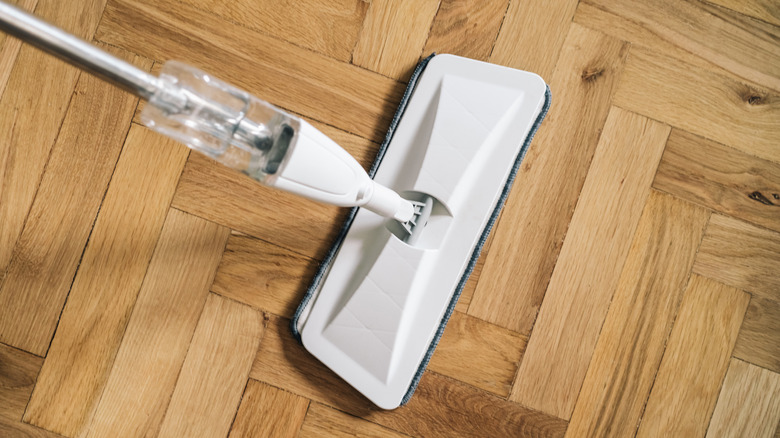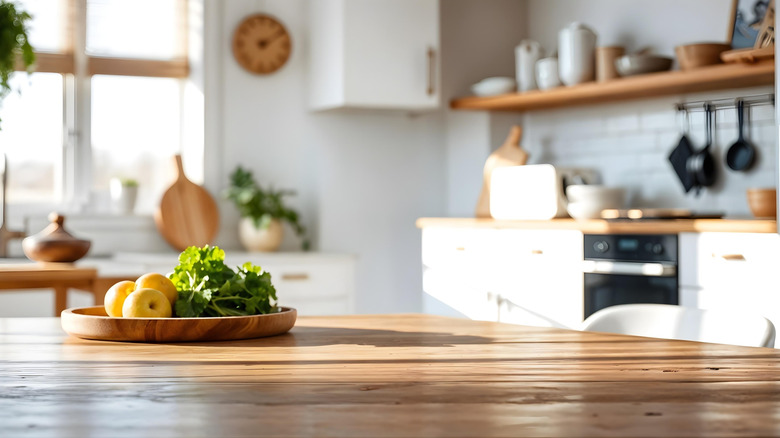Here's How You Can Clean Behind (And Under) Your Larger Kitchen Appliances – Without Moving Them
Nobody loves cleaning the kitchen, but it's a necessary chore. Most tasks are simple, like wiping down surfaces and degreasing your cabinets with baking soda; others are trickier, such as cleaning your microwave filter or hard to reach places like under your fridge or behind the range, which can feel impossible without some heavy lifting. Fortunately, there are several tools that can make the latter job much easier. To learn more, Food Republic consulted Chris Willatt, owner of Alpine Maids, who revealed, "A retractable gap dust cleaner, a flat duster such as a Swiffer, and a flat head mop are usually your best bets for cleaning hard-to-reach places under and behind your appliances."
These products are flat, extendable, and designed to reach tight spots. The retractable dust cleaner and flat duster are also flexible, making them perfect for reaching awkward nooks and crannies that bulkier tools like a standard mop or vacuum cannot. If you prefer to use a vacuum, you may already have a crevice attachment suited for the job. All in all, "Using a mixture of all these things usually works best," Willatt said. "The duster and mop are ideal for cleaning larger areas around your appliances. At the same time, the vacuum attachment provides some suction to remove the leftover dirt that your other cleaning devices can't reach," he added.
For the best results, Willatt recommended, "Moving your appliances and cleaning once a year, and cleaning without moving them once a month." While these tools make it possible to tackle hidden spots without heavy lifting, keep in mind that you won't be able to see everything, and dirt can still accumulate completely out of sight.
Why you should clean these hidden spots regularly
Building a good cleaning schedule is a great way to keep your kitchen looking its best and gives your routine structure, but beyond appearances there are important hygiene reasons to stay on top of your kitchen's cleanliness. According to Chris Willatt, "Dirt, grime, and old food are a hazard in your home," he said. "At the end of the day, accumulation of these things anywhere in your house can lead to allergy or respiratory problems."
Dust behind appliances can release fine particles into the air, triggering sneezing or even asthma flare-ups. "This dirt and grime can also attract bacteria that lead to mold and mildew growing in your home," he added. Mold in damp areas may spread spores that cause allergic reactions and sinus issues alongside causing foul odors to develop. Also, old food scraps are a prime target for pests like ants, rodents, or cockroaches, which nobody wants to find lurking around their kitchen.
Beyond general health hazards, grime build-up can also become a serious risk to your safety. "The gunk behind your range and oven can actually be a fire hazard if the head behind your appliance catches it on fire." Dust particles and grease are both highly flammable — especially when paired together. Alongside being flammable, dust particles can also cause electrical fires, which are notoriously difficult to put out.
How to prevent dirt and grime buildup
The key to preventing dirt and grime buildup is consistency. According to Chris Willatt, "Clean your appliances as you use them. If you wipe down your range after you use it, you are going to have less dirt and grime that can be pushed behind your appliances and accumulate." To keep on top of dirt and grime buildup, a strict schedule is essential. "Pick a day of the week to use the duster under your appliances, and do it," he said. "If you choose Sunday, clean under your appliances after dinner every Sunday," Willatt added. You can adjust your schedule depending on your preferences, making sure to establish a solid routine that you can commit to.
Make sure to use food-safe antibacterial sprays and soaps to inhibit bacterial growth, you can also even make an all-purpose kitchen cleaner using only three ingredients. For optimal cleanliness, rinse your sponge or cloth in hot water regularly after cleaning , and remember to swap them out for a new one every one or two weeks as bacterial growth can occur in moist environments. Another tip is keeping certain items allocated to certain areas to prevent cross-contamination. For example, you should have a microfiber towel that is allocated to the range, and another one for behind the fridge.



